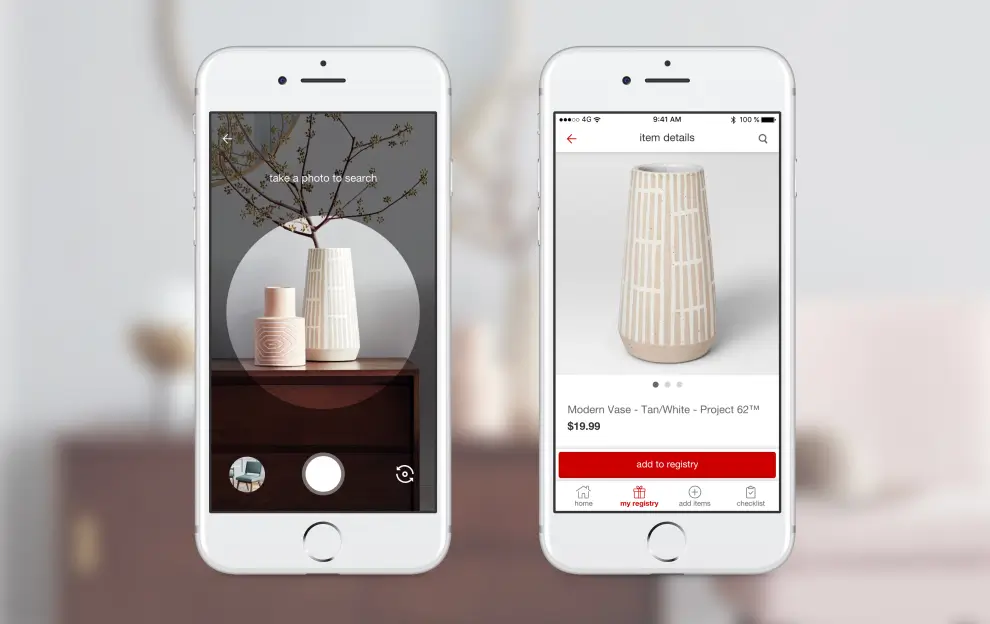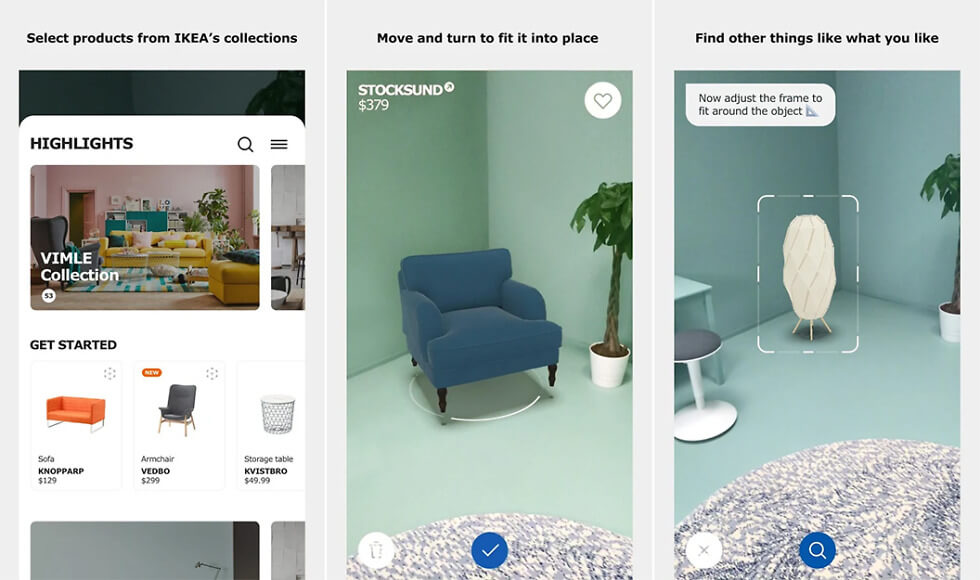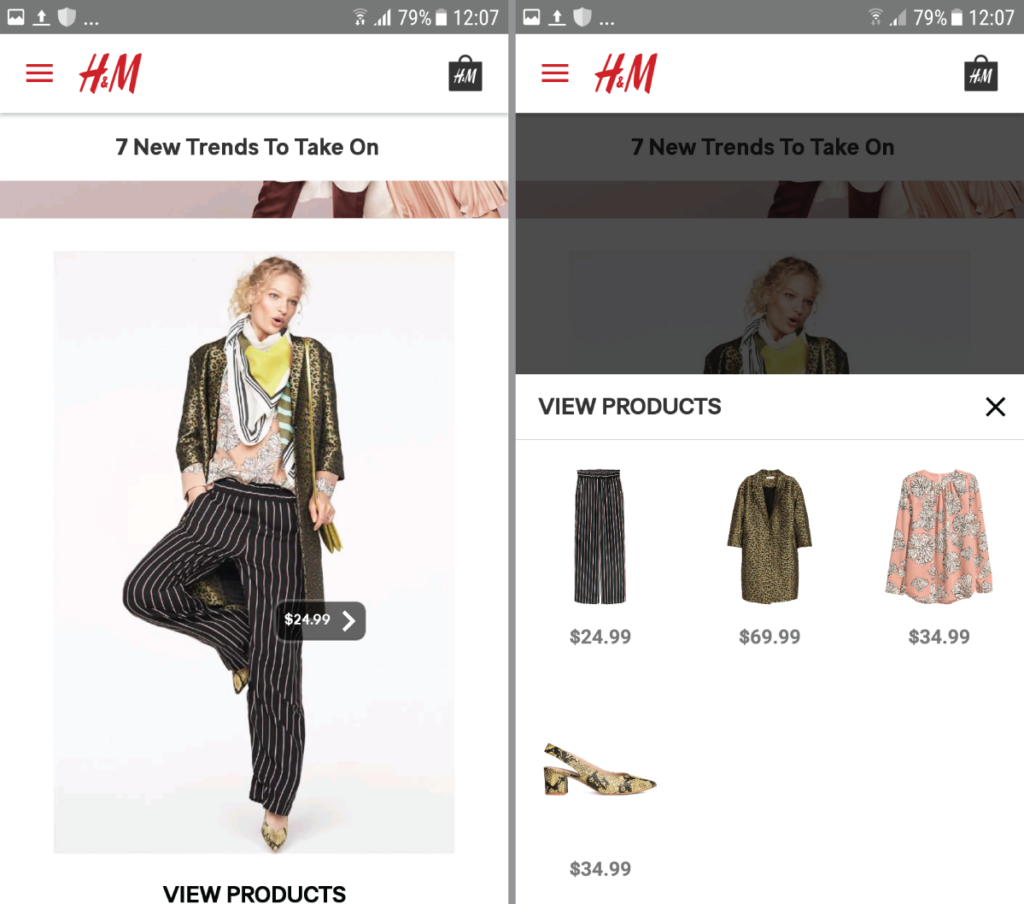How Visual Search Can Enhance Your Customer Experience
Imagine you’re looking for a specific product. You do a quick Google search and, while you don’t find exactly what you’re looking for at first, you do find something similar. So, you click on a visually-similar product and search based on that image to find your real target.
Your search began with text, but visual information is what really guides your search and produces the desired result. That’s the essence of visual search as a search engine concept.
Given the importance of visual information in the customer journey, it’s no surprise that visual search is one of the fastest-growing trends in online retail. Let’s take a closer look at this technology and see how useful it can be for your business.
Recommended reading
- Card-Not-Present Transactions: Know the Risks & Rewards
- Top 15 Customer Returns Reasons in 2025 & How to Avoid Them
- Online Shopping vs In-Store Shopping: the Future of Retail?
- They’re Here — Cyber Week 2024 Stats & Analysis!
- What is a Return Customer Rate? How to Calculate Your RCR
- Prime Day 2024: How to Avoid Chargebacks on the Big Day
What is Visual Search?
- Visual Search
Visual search is an AI-enabled technology that allows customers to search for products and items by visual cues rather than textual information. For example, if a customer is searching for “blue t-shirt,” the algorithm will present them with visual products that match this description. The user can then refine the search according to the customer’s taps or input.
[noun]/viZH • ə • wəl • sərCH/In the context of online shopping, visual information is one of the most important factors influencing your customer’s decision to make a purchase.
Research shows that around three-quarters of online shoppers in the US rely on visual content like images and videos to determine whether to make a purchase. By comparison, only 3% of shoppers say they do not use any visual information.
With visual search, a user can effectively search for items using an image, rather than text. An algorithm examines the image based on shape, color, texture, and other features. These may be characteristics that the human eye can detect, but they may go beyond human visual capability as well. The AI then searches the web for images that are closely compared to the queried image.
Visual search tools enable you to offer a smoother, more frictionless experience for customers. With this technology, it’s possible to help your customers find exactly what they want quicker than ever before.
Visual Search is Trending
If you want to engage new consumers, you can do it through visual search tools. Visual search is popular among your customer base. Many of your customers are already engaged in visual search practices at some level. And those who aren’t already using it say they’re likely to try it soon.
Data suggests that 56% of consumers in the US are at least aware of visual search tools. Seven in ten consumers who are aware of these tools say they’re likely to try it if they’re not using it now. Unsurprisingly, younger consumers are leading in terms of visual search adoption for eCommerce: 72% of Millennial and Gen-Z respondents said they would like to use it for shopping purposes.
In fact, 62% of millennial and Gen Z shoppers prefer visual search technologies over any other shopping feature. Indeed, 57% of those shoppers connect with these items through social media outlets like Instagram and TikTok.
Top 3 Current Uses for Visual Search by Consumers:
81% Use a camera to find and research products
35% Direct users to products/services tagged in a photo or video
33% Search the internet by taking a photo
Top Visual Search Benefits, According to Consumers:
83% Quick, easy access to relevant products/services
83% Hands-free research; no need to type
81% “Camera-first” way to discover the world
Despite this enthusiasm, the key barrier to adoption is getting customers to understand the technology’s applications outside the immediate retail setting.
Visual search is a novelty for many buyers. Unfortunately, it’s not yet a primary channel for research or purchasing. At present, only four in ten consumers really understand how visual search improves the customer experience.
Visual Search vs. Image Search
To clarify, visual search and image search are not the same thing. Despite the fact that both of these terms revolve around imagery, visual search is a non-static image delivery system.
In simple terms, you use words to conduct an image search. Text is used to connect image searches; in contrast, visual search uses images themselves to conduct the search.
Visual search is an algorithm-based machine learning tool that uses visual imagery to connect search criteria. This technology provides shoppers with the ability to shift search criteria on a purely visual basis. Although image search has been around for a long time, visual search wasn’t available until AI-enabled machine learning platforms became available for public use.
Machine learning provides deeper contextual “vision” for each image search, and links these images as a “theme.” This way, it can algorithmically “predict” visual cues for consumers, rather than just follow linear, textual instructions.
Amazon Camera Search, for example, is an increasingly-popular eCommerce visual search tool. The app allows customers to use the camera on their devices to create a digital image of visual information. They can use the tool to scan barcodes, identify items, and get suggestions based on that visual data.
Benefits of Visual Search for Retailers
eCommerce is changing due to machine learning and other emerging technologies. Gone are the days of pitching goods with a paragraph of text and one or two stationary images to highlight your products. Now, customers expect your platform to infer what they’re searching for based on products that frequently catch their attention.
It’s a good idea to keep ahead of the curve. While 72% of eCommerce companies aren’t looking to expand their marketing efforts into digital voice and visual search just yet… that leaves around 28% who are. Embracing these technologies earlier can be an excellent way to stand out from your competition and provide customers with a great shopping experience.
A few benefits of adopting visual search into your marketing efforts could include:
Examples of Retailers Already Embracing Visual Search
We’ve spent a good deal of time singing visual search’s praises. But, are there any real-life examples of companies using this search method to their advantage? Let’s take a look at a few innovators in this field, and see what we can learn from them.
Target
Target makes effective use of their collaboration with Pinterest Lens to provide relevant searchable products based on visual cues downloaded from user smartphones and cameras. This incredibly powerful tool enables customers to search for products they like based on items they see in other stores, in their homes, or on the go. To put this into perspective: let’s say a user really likes a home decor item they saw at a friend’s house during a dinner party. By snapping a pic of the item and uploading it to their Target app, the company’s visual search platform will seek and produce all available items carried in Target stores matching that search criteria.

Ikea
Ikea is another major retailer that has experimented with several forms of visual search over the last few years to produce a hyper-convenient, 3D shopping experience for customers. Using advanced visual search capabilities from GrokStyle (a Meta company), Ikea is able to display its products to customers who are shopping for a particular room, color, or product size.
The application works by taking products already available on Ikea’s site and displaying them in the customer’s chosen setting. It can also match visual cues uploaded by the customer’s smartphone to items in Ikea’s catalog.


Amazon
Amazon’s Style Snap is another future-forward example of visual search in action. As one of the largest (if not the largest retailer) on the planet, Amazon is always on the frontline of emerging marketing technologies and is generally one of the first to hone its availability. Thus, Amazon Style Snap has been an industry gold standard since 2020 and makes it incredibly easy for consumers from all walks of life to use and engage with its platform.
Much like the other visual search engines on this platform, all a customer needs to do to take advantage of Style Snap is to find an item they like on Amazon and run a visual search based on that product or upload images via their smartphone and choose how they want that product displayed.

eBay
Online resale giant eBay was one of the first companies to experiment with visual and image search algorithms. The company implemented Find it on eBay way back in 2017, and has applied the component consistently ever since. In fact, Find it on eBay is so popular that Google Chrome offers a few desktop extensions to make Google shopping experiences much more seamless.

H&M
Trendy style arbiter H&M also utilizes visual search components in its shopping applications and has done so consistently since 2018. The company makes it incredibly simple for customers to shop items by style, color, or cut. They also allow them to upload images that help them sort products by personal relevance.

As we see, a number of major retailers have already invested in visual search as a means to hone their customer experience and increase conversions. Frankly, customers want marketing that speaks to them on a personal level. Visual search takes this personalization to the next level by displaying what customers want when it's most timely and relevant.
Potential Downsides of Visual Search
So, we’ve run down a bunch of the benefits of visual search, and offered some examples of how you could implement it. There are a few inevitable downsides to think about, though. These could include:
Visual Search Best Practices
Visual search is set to be a revolutionary tool for retail in the coming years. To be ready for visual commerce, though, you must ensure your site has accurate images that are optimized for search. Establishing a few best practices can make all the difference between a functionally visual search-enabled site and a visual dud.
To accomplish the former, each of your product pages should use:
Optimize Your Site for Visual Search
The best practices mentioned above are important for visual search optimization. It’s important to note, however, that they can also help you protect sales even after the transaction.
If a customer makes a purchase, but the final item doesn’t reflect what was shown on your site, the customer is much more likely to demand a refund. Nearly one-quarter of all online returns happen because the product differed from what the customer saw online.
Even worse, the customer might file a chargeback, claiming that the item in question didn’t reflect what was promised. This could qualify for a dispute using Visa reason code 13.3 (Not as Described or Defective Merchandise/Service), for instance. This would be considered a merchant error, which would make successful chargeback representment unlikely.
Getting your business ready for visual search is a big step toward protecting your profitability. Have additional questions about optimizing your site to attract customers and prevent loss? Click below and speak with one of our eCommerce experts today.
FAQs
What is a visual search?
Visual search is an AI-enabled technology that allows customers to search for products and items by visual cues rather than textual information. For example, if a customer is searching for “blue t-shirt,” the algorithm will present them with visual products that match this description. The user can then refine the search according to the customer’s taps or input.
How do I do a visual search?
Customers can generally use visual search by using shopping applications that are visual search-enabled, like Amazon, Target, or eBay. Once the application is open, customers can snap photos on their smartphone and upload the image to their shopping app. The visual search will then produce similar images and products according to the visual cues provided in the customer’s image.
Can you do a visual search on Google?
For customers, Google Lens allows users to upload and match products directly from the google search bar through Chrome or via a Google application.
Merchants, on the other hand, can piggyback off the search engines featured on Google Lens by providing excellent SEO search criteria. That said, if you want targeted visual search capabilities in your own shopping app or site, you will likely need to partner with a third-party software developer like Syte to help you develop and integrate visual search options with your product listings.
What is the visual search process?
Major retailer Target makes effective use of their collaboration with Pinterest Lens to provide relevant searchable products based on visual cues downloaded from user smartphones and cameras. This incredibly powerful tool enables customers to search for products they like based on items they see in other stores, in their homes, or on the go.
To put this into perspective, let’s say a user really likes a home decor item they saw at a friend’s house during a dinner party. By snapping a pic of the item and uploading it to their Target app, the company’s visual search platform will seek and produce all available items carried in Target stores matching that search criteria.















